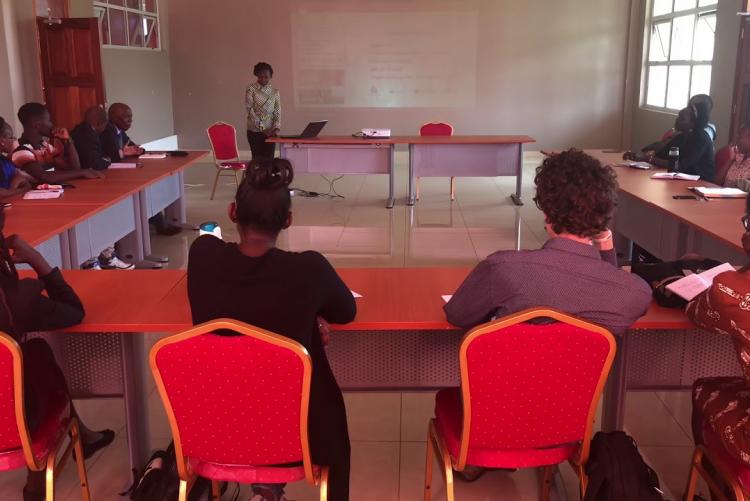Mercy Ndalila, PhD student, University of Tasmania – Australia, delivered a seminar on the ongoing Australian fires and lessons for Kenya on preparedness and Adaptation on January 22, 2020 at the Wangari Maathai Institute for Peace and Environmental Studies (WMI).
There has been an increase in global forest fires evidenced by the Brazilian Amazon fires of 2019, California fires of 2017 and 2018 and Mediterranean fires of 2018 that have claimed more than 250 lives and destroyed property. The ongoing Australian bushfires have so far burnt more than 25 million ha and have been propagated by the prolonged dry weather conditions and the native eucalyptus tree species which is highly flammable. The bushfires in Australia have resulted to ecological, economic and social impacts which include loss of 28 lives and about 500 million wildlife.
Although not well documented, there have been increasing reports of wildfires in Kenya mainly in the Mt. Kenya region, the Aberdare, Londiani, Eburu, Menengai and the Maasai Mau. Despite this, the country lacks a robust fire management strategy with institutions such as Kenya Forests Service (KFS) and Kenya Wildlife Service (KWS) lacking the capacity to adequately respond in the event of forest fires. There is need for focused research into wildfire regimes and adoption of fire weather indices which can aid in prediction of wildfires.
Prof. David Mungai, Director WMI, noted gaps in research on wildfires and encouraged Masters and PhD students to consider this as their possible research area. Participants reacted to the presentation and key issues discussed include the benefits of forest fires, politics of the Amazon fires, and measures to be taken after wildfires.

